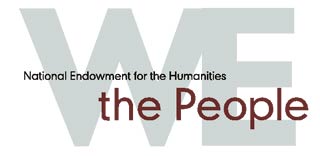Lessons
Lesson for Core Concept #4: Tension between Conflict and Compromise
Jacqueline Fernandez, Graduate Education Intern, Tufts
The decade before the Revolution began was a continual tug of war between those who wanted to force confrontation and those who sought accommodation and compromise.
To Pay or Not to Pay, That is the Question
Purpose:
Encourage and further develop students’ analytical, debate, listening, speaking, and problem solving skills by hosting a mock trial in which a jury must decide whether or not individuals involved in throwing tea overboard in the Boston Tea Party broke the law, should be jailed, and should have to pay for the tea. Students will develop arguments, listen to each other, develop counterarguments and work as teams to come to a conclusion on the issue from the perspective of their assigned character.
Goals
By the end of the activity, students will understand that
- some people had specific motivations to force confrontation
- some people had specific motivations to seek accommodation
- each group used events in a different way
- the dynamic of the opposing approaches is evident in the arguments of each group which were intended for the other
Activity: Debate and Class Discussion
Timeframe: One class period
Part I:
Have students break into four groups. Provide them with fifteen to twenty minutes to read the documents and fill out the document analysis sheet (individually or together).
Group 1: Sons of Liberty
Keeping the Peace
"Extract of a letter from Charlestown, South Carolina, Dec. 2, 1765 ..."
Article from page 1 of the Supplement to the Boston Gazette, 27 January 1766
View Document
Sons of Liberty. Read for context on their identities.
Group 2: Non-Consumption and Non-importation
Trade Violators Exposed!
"Summary of the Cargo of the Snow Pittt [sic] ..."
List from page 1 of The Boston Chronicle, Number 120, 17-21 August 1769
View Document
John Mein and fellow merchants who imported British Goods. Read for context on their identities.
Group 3: Boston Tea Party
The "True Sons of Liberty" Weigh In
Tradesmen of Boston and allies who support British law and have been threatened by "patriots." Read for context on their identities.
Group 4: Boston Tea Party
Good and Loyal Subjects Speak up
"At a Town-Meeting held in Marshfield ..."
Article from pages 1-2 of The Massachusetts Gazette; and the Boston Post-Boy and Advertiser, Number 859, 31 January - 7 February 1774
View Document
Marshfield town members present at the meeting. Read for context on their identities.
Part II:
Once students read the documents and complete a document analysis worksheet, they will divide into teams representing their assigned groups and be presented with the following challenging situation:
You are either a member of the Sons of Liberty, a merchant who imported British goods, a tradesman of Boston who supported British tax law, or a person from Marshfield and you have been called to a very important meeting. The question to be considered is whether the self-professed patriots who admittedly threw tea overboard have broken the law; should have to pay for the tea damaged in the Boston Tea Party; and should be jailed for their actions. Taking into account what you learned from your assigned identity and primary source document, you must decide where you stand on the issue. You will have four options in making your choice. You can self-select from one of the following: strongly agree, somewhat agree, somewhat disagree, or strongly disagree.
Part III:
Each corner of the room will have a poster board with one of the following labels: strongly agree, somewhat agree, somewhat disagree, or strongly disagree. Students will go to the corner that corresponds with their interpretation of what their assigned identity’s stance would be and have five minutes to discuss with other group members where they stand and why. The goal of students will be to use what they learned from reading their document and their understanding of their character and work together to present a persuasive case to other students. After the five minutes, an identified representative from each group, or if groups are small, each person in the group, will briefly state the basis for their rationale in four or five points. After a group presents their stance, students who may have been convinced to change their original stance will be allowed a period of 25 seconds to decide if they want to change their stance and move to the corresponding section of the room. Students will have to listen well because they will have to fill out a chart related to the debate for homework.
At the end of the activity, the corner of the room with the most individuals decides the fate of those who tossed the tea. The class will then take a few minutes to discuss what arguments were made by whom and why, which arguments were most persuasive, and why, and what the counterarguments were.
Finish
After the activity, the teacher will assign homework, which will be: 1) to fill in the chart below; 2) answer the Questions to Consider that correspond with their assigned document for the activity; 3) select one of the four documents they did not read and answer the corresponding Questions to Consider and in bullet points, note any similarities and differences between the two they have read. At a later date, students can select one Further Exploration Question from either document to be answered in the form of a project.
Download
PDF document of PDF of the Homework Chart



